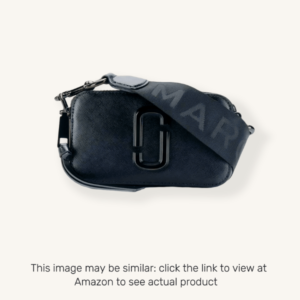Understanding Customer Needs
When it comes to handbag storage, understanding customer needs is paramount. Handbags are more than just accessories; they are often investments, holding both financial and sentimental value.
Customers are looking for storage solutions that address the common question always on their minds: how to store handbags in a way that not only organizes their bags but also protects and preserves them
One of the most common pain points for customers is the lack of space. Many people have a variety of handbags, from large totes to small clutches, and finding a space to store them all can be challenging.
This is especially true for those living in urban environments where space is at a premium. A good storage solution must make efficient use of available space, allowing customers to store their handbags without cluttering their living areas.
This could mean utilizing vertical space, offering stackable options, or creating multi-functional storage units that blend seamlessly with home décor.
Another significant concern for customers is the protection of their handbags from damage. Handbags, especially those made of delicate materials like leather or suede, are susceptible to various types of damage, including scratches, scuffs, and deformation.
Handbags can also be affected by environmental factors such as dust, moisture, and sunlight, which can cause discoloration and material degradation.
Additionally, one common issue many face is dealing with damaged zippers, which can make a handbag unusable. For those facing this problem, check out our comprehensive guide on how to fix a handbag zipper for helpful tips on getting your handbag back in shape.
Customers need storage solutions that protect their handbags from these elements, ensuring that their bags remain in pristine condition for as long as possible.
This might involve padded compartments, dust covers, or storage options that keep handbags elevated and away from potential hazards.
Ease of access is another crucial factor. While protection and space efficiency are important, customers also want to be able to access their handbags quickly and easily.
For many, handbags are a daily necessity, and they need a storage solution that allows them to grab their bag and go without having to dig through piles or move things around.
A well-designed storage system should make it easy to see and reach all of one’s handbags, perhaps through clear compartments, pull-out shelves, or rotating displays.
Ultimately, the goal is to create a storage solution that meets the diverse needs of customers maximizing space, protecting their investments, and providing easy access.
By addressing these key pain points, a storage solution can offer real value to customers, enhancing their daily lives and helping them to better care for their cherished possessions.
Storage Options for Handbags
When it comes to storing handbags, a one-size-fits-all approach simply won’t do. Different types of handbags require different storage solutions to ensure they remain in good condition and are easily accessible.
The ideal storage solution should offer a range of options to accommodate the variety of styles and sizes that make up a typical handbag collection.
One of the most versatile storage methods is shelving. Shelves provide a straightforward way to store handbags of all sizes, offering easy visibility and access.
For larger bags like totes and hobo bags, wide shelves with enough depth to accommodate their size are ideal. These shelves can be placed in a closet or as part of a freestanding unit.
Adjustable shelves offer even more flexibility, allowing users to customize the space based on the size of their handbags. Shelves can also be used in conjunction with dividers to keep bags upright and organized, preventing them from slumping or getting crushed.
Cubbies are another excellent option, especially for smaller handbags like clutches and crossbody bags. Cubbies provide individual compartments for each bag, keeping them separate and preventing them from rubbing against each other.
This type of storage is particularly useful for delicate bags that could be easily damaged if stored too closely together. Cubbies can be incorporated into closet systems or used in freestanding storage units, offering a neat and organized look.
Boxes are a classic storage solution that offers excellent protection. For handbags that are not used frequently, storing them in boxes can help protect them from dust and environmental damage.
Boxes with clear sides or labels allow for easy identification of the contents without having to open each one. Additionally, boxes can be stacked, making them a space-efficient solution for those with limited storage space.
It’s important, however, to use boxes made from materials that allow for some airflow, as this can help prevent issues like mold or mildew.
Closet organizers offer a more comprehensive storage solution, combining several methods into one system. A well-designed closet organizer can include shelves, cubbies, drawers, and hanging space, providing a dedicated spot for each type of handbag.
This type of system is ideal for those with large collections or those who want to keep all their accessories in one place. Closet organizers can be customized to fit the specific dimensions of a closet, maximizing the use of space and keeping everything easily accessible.
Finally, for those who want to display their handbags, open storage solutions like racks or stands can be a stylish and functional option.
These types of storage allow handbags to be both protected and showcased, turning them into a part of the room’s décor. This is particularly appealing for designer handbags or those with unique designs that the owner wants to enjoy even when not in use.
Material Considerations for Handbag Protection
The materials used in handbag storage solutions play a crucial role in protecting and preserving the bags. The right materials can shield handbags from dust, moisture, and light, all of which can cause damage over time.
When choosing materials for handbag storage, it’s important to consider both the protective qualities and the aesthetic appeal, as storage solutions should not only be functional but also complement the overall design of a space.
Breathable fabrics are an excellent choice for storage solutions that come into direct contact with handbags.
Materials like cotton or linen allow air to circulate, which helps to prevent moisture buildup a common issue that can lead to mold or mildew.
Dust covers made from these materials can protect handbags from dust and dirt while allowing the bags to “breathe.” For added protection, consider using padded fabric to line shelves or cubbies, which can help prevent scratches or scuffs.
Clear acrylic is another popular material for handbag storage, particularly for those who want to be able to see their handbags at a glance.
Acrylic storage boxes or display cases offer excellent protection from dust and environmental factors while keeping the bags visible.
This material is particularly useful for showcasing designer handbags or those with intricate details. Acrylic is also lightweight and easy to clean, making it a practical choice for everyday use.
It’s important to ensure that the acrylic is UV-resistant to prevent any damage from light exposure, which can cause colors to fade over time.
Glass is another option for those who want visibility combined with a more luxurious look. Glass-fronted cabinets or display cases can protect handbags from dust and dirt while providing a clear view of the contents.
This material is particularly suitable for high-end storage solutions, offering a sleek and elegant appearance. Like acrylic, it’s important to choose UV-resistant glass to prevent any light-related damage.
Glass can also be combined with other materials, such as wood or metal, to create a more customized storage solution that fits with the overall aesthetic of a room.
For those who prefer a more traditional look, wood can be a great choice. Wood is sturdy and durable, offering excellent protection for handbags.
Shelves or cabinets made from high-quality wood can provide a timeless look that complements a variety of décor styles.
It’s important to ensure that the wood is properly treated and sealed to protect against moisture, which can cause warping or damage to the handbags.
For added protection, wood can be combined with other materials, such as glass or fabric, to create a more versatile storage solution.
The materials used in handbag storage solutions are just as important as the design itself. By choosing the right materials, it’s possible to create a storage system that not only protects handbags from damage but also enhances their appearance and accessibility.
Whether opting for breathable fabrics, clear acrylic, glass, or wood, the key is to select materials that provide both protection and style, ensuring that handbags are kept in the best possible condition for years to come.
Organization Tips for Efficient Handbag Storage
When it comes to organizing handbags, it’s essential to create a system that not only keeps them tidy but also allows for quick and easy access.
A well-organized handbag collection not only preserves the quality of the bags but also enhances the overall functionality of your storage space.
Below are some comprehensive tips to consider when organizing handbags.
Categorizing by Size, Color, or Frequency of Use
One effective way to organize handbags is by categorizing them based on size, color, or how frequently they are used.
By grouping handbags according to these criteria, you can streamline the process of selecting the perfect bag for any occasion.
- Size: Arranging handbags by size is particularly beneficial for those with limited space. Smaller bags like clutches and crossbody bags can be stored together, while larger totes and shoulder bags can be placed in another section. This method also helps in maximizing storage space as it allows you to stack or line up handbags in an orderly manner.
- Color: Organizing handbags by color can add a visual appeal to your storage space, making it easier to find the perfect bag to match your outfit. This method is not only aesthetically pleasing but also practical, especially for those who have a large collection of handbags in various colors.
- Frequency of Use: For those who have specific go-to bags, organizing by frequency of use is a practical approach. Keep everyday bags easily accessible, while special occasion handbags can be stored in a less prominent place. This organization method saves time and keeps your most-used items within easy reach.
Using Dividers and Labeled Sections
To maintain an organized handbag collection, it’s helpful to use dividers or labeled sections within your storage solution. Dividers can be particularly useful in larger storage units, such as shelves or drawers, to keep handbags upright and separated.
- Dividers: Customizable dividers can be used to create individual compartments within a shelf or drawer, preventing handbags from toppling over or getting tangled with one another. They can also be adjusted to accommodate bags of different sizes.
- Labeled Sections: For those who prefer a more structured approach, labeled sections can be an effective way to keep your handbags organized. Labeling each section based on bag type, color, or occasion ensures that each handbag has its own designated spot, reducing clutter and making it easier to locate specific items.
Ensuring Accessibility in Handbag Storage
Accessibility is a crucial factor in handbag storage solutions. A well-designed storage system should allow you to easily retrieve any handbag without causing damage or disarray to the rest of your collection. Here are some features and considerations to enhance accessibility.
Pull-Out Drawers
Pull-out drawers are a highly practical feature in handbag storage, offering easy access to your collection. These drawers can be designed with adjustable compartments, allowing you to customize the space according to the size and shape of your handbags.
- Easy Retrieval: With pull-out drawers, handbags can be neatly stored without being piled on top of each other, preventing damage and making it easier to see all your options at a glance.
- Space Efficiency: Pull-out drawers maximize the use of space by allowing you to store handbags in a compact yet organized manner. They are particularly useful in smaller rooms or closets where space is at a premium.
- Rotating Shelves: Rotating shelves offer a modern and innovative solution for handbag storage, particularly for larger collections. These shelves can be installed in walk-in closets or dedicated storage units, providing a 360-degree view of your handbags.
- Full Visibility: Rotating shelves allow you to see all of your handbags without having to dig through piles or move other bags out of the way. This feature is particularly useful for those with large collections or for display purposes.
- Customizable Compartments: Rotating shelves can be designed with adjustable compartments, allowing you to store handbags of various sizes and shapes. This flexibility ensures that each bag is stored securely and is easily accessible.
Adjustable Compartments
Adjustable compartments are another excellent feature to consider for handbag storage. These compartments can be resized to fit different handbags, ensuring that your collection remains organized and easy to access.
- Versatility: Adjustable compartments offer the flexibility to accommodate handbags of varying sizes, from small clutches to oversized totes. This feature is especially beneficial for those with a diverse collection.
- Protection: By keeping handbags in separate, adjustable compartments, you can prevent them from being squished or damaged, maintaining their shape and quality over time.
Aesthetic Appeal in Handbag Storage Solutions
While functionality is key in handbag storage solutions, aesthetic appeal should not be overlooked. Your storage solution should complement the overall design of your room, adding to its visual appeal while keeping your handbag collection organized.
Here are some ideas to ensure that your handbag storage solution is both functional and beautiful.
Blending with Interior Styles
The design of your handbag storage solution should seamlessly blend with the rest of your room’s decor.
Whether you prefer a modern, minimalist look or a more classic, traditional style, your storage solution should reflect your personal taste and enhance the overall aesthetic of the space.
- Modern Designs: For those with a modern interior style, sleek, minimalist storage solutions made of materials like glass, metal, or high-gloss finishes can create a clean and sophisticated look. Consider options like floating shelves, clear acrylic displays, or metal cubbies to keep your handbags organized while adding a contemporary touch to your room.
- Classic Designs: If your interior style leans more toward the classic or traditional, consider storage solutions made from wood, leather, or other natural materials. Custom cabinetry, wooden shelves, or leather-covered boxes can provide both functionality and elegance, enhancing the overall aesthetic of the room.
Incorporating Decorative Elements
Adding decorative elements to your storage solution can further enhance its aesthetic appeal. Consider incorporating features like lighting, mirrors, or decorative hardware to elevate the look of your storage space.
- Lighting: Proper lighting can highlight your handbag collection and make the storage space feel more luxurious. Consider installing LED strip lights under shelves or inside cabinets to illuminate your handbags and create a warm, inviting ambiance.
- Mirrors: Incorporating mirrors into your storage solution can make the space feel larger and more open, while also allowing you to see your handbags from different angles. Mirrored doors or panels can add a touch of glamour and sophistication to your storage area.
- Decorative Hardware: The hardware on your storage solution, such as drawer pulls, knobs, or handles, can also contribute to its overall aesthetic. Choose decorative hardware that complements the style of your room, whether it’s sleek and modern or ornate and traditional.
Enhancing Visual Appeal with Color and Texture
The color and texture of your storage solution can significantly impact the overall look and feel of your space. Consider using materials and finishes that add visual interest while complementing the rest of your decor.
- Color: Choosing a color scheme that complements your room’s palette can create a cohesive and visually pleasing look. Neutral tones like white, beige, or gray can provide a clean and elegant backdrop for your handbags, while bolder colors like navy, emerald, or burgundy can make a statement and add depth to the space.
- Texture: Incorporating different textures into your storage solution can add dimension and interest to the space. Consider using materials like velvet, leather, or textured wood to create a tactile and visually appealing storage solution that enhances the overall aesthetic of your room.
By considering these tips and features, you can create a handbag storage solution that is not only practical and functional but also enhances the beauty and style of your space.
Whether you have a small collection or a large array of handbags, these ideas will help you design a storage system that keeps your bags organized, accessible, and beautifully displayed.
Long-Term Maintenance of Handbags
Effective handbag storage solutions must consider not only how to store handbags but also how to maintain them in pristine condition over the long term.
Regular cleaning and maintenance are crucial to preserve the quality and longevity of handbags. Here’s an in-depth look at why maintenance is important and how to design storage that supports easy upkeep.
Importance of Regular Cleaning and Maintenance
Handbags are often significant investments, and their longevity is directly related to how well they are maintained. Dust, moisture, and regular use can gradually wear down materials if not properly cared for.
Ensuring that handbags are clean and stored in an environment that protects them from potential damage is key.
- Preventing Damage: Regular cleaning prevents dust and dirt buildup, which can cause stains and discoloration over time. Additionally, protecting bags from moisture prevents mold and mildew, which can ruin the material.
- Prolonging Lifespan: Proper maintenance and cleaning ensure that the handbags retain their original quality and appearance, thereby extending their usable life.
- Maintaining Value: For those who collect designer handbags, regular upkeep is essential for preserving their value. Well-maintained bags can hold or even appreciate in value over time.
Easy-to-Clean Materials and Removable Liners
Selecting the right materials for your storage solutions is essential for long-term maintenance. Materials that are easy to clean or come with removable liners can greatly simplify the process of keeping your storage area, and your handbags, in top condition.
- Easy-to-Clean Surfaces: Opt for materials like smooth wood, metal, or high-quality plastic, which are easy to wipe down and keep clean. Avoid fabrics or materials that can easily trap dust or absorb moisture.
- Removable Liners: Using storage solutions with removable liners can make cleaning much easier. Liners can be taken out and washed or replaced, keeping the interior of your storage fresh and clean.
- Breathable Fabrics: If your storage includes fabric elements, choose breathable fabrics that allow for air circulation, reducing the risk of mildew. Breathable fabrics can also be more easily cleaned and maintained.
Budget Considerations & High-End Storage Solutions
When designing handbag storage solutions, it’s important to consider the budget. Storage options can range from budget-friendly DIY solutions to high-end custom designs.
Understanding the spectrum of options available allows you to choose a solution that fits your financial constraints while still meeting your needs.
Budget-Friendly Solutions
For those on a tight budget, there are several cost-effective ways to create functional and stylish handbag storage.
- DIY Solutions: Simple DIY projects can offer great storage solutions at a fraction of the cost. For instance, repurposing old furniture like bookshelves or installing inexpensive wall hooks can provide ample storage without breaking the bank.
- Affordable Materials: Choose budget-friendly materials such as MDF, particleboard, or plastic for your storage units. These materials can be easily customized with paint or decorative finishes to match your decor.
- Second-Hand Finds: Thrift stores and online marketplaces often have affordable storage units that can be upcycled or repurposed for handbag storage.
High-End Options
For those with more flexibility in their budget, investing in high-end storage solutions can provide a luxurious and highly customized experience.
- Custom Built-ins: Custom-built storage units can be designed to perfectly fit your space and specific storage needs, offering a seamless and sophisticated solution.
- Luxury Materials: Using high-end materials such as solid wood, glass, or premium metals can enhance the aesthetic and durability of your storage. These materials not only look elegant but are also long-lasting and easier to maintain.
- Advanced Features: High-end options often include advanced features like LED lighting, climate control, and automated systems, which add convenience and protect your handbags from damage.
Environmental Impact and Sustainable Storage Options
The environmental impact of our choices is more important than ever. Incorporating eco-friendly elements into your handbag storage solutions can reduce your carbon footprint and contribute to a more sustainable lifestyle.
Sustainable Materials
Choosing sustainable materials is one of the most impactful ways to make your storage solution eco-friendly.
- Recycled Materials: Opt for storage units made from recycled or upcycled materials. Many manufacturers now offer products made from reclaimed wood, recycled metal, or repurposed plastic, reducing the need for new resources.
- Sustainable Wood: If you prefer wooden storage, look for options made from sustainably sourced wood, certified by organizations like the Forest Stewardship Council (FSC).
- Low VOC Finishes: Choose paints, stains, and finishes that are low in volatile organic compounds (VOCs), which are better for the environment and indoor air quality.
Upcycled Solutions
Upcycling old furniture or materials is another excellent way to create storage while minimizing environmental impact.
- Repurposing Furniture: Consider repurposing old furniture pieces into handbag storage. An old cabinet, dresser, or bookshelf can be transformed with a little creativity and effort.
- Creative DIY Projects: Use reclaimed wood, pallets, or other discarded materials to build custom storage solutions. This not only saves money but also keeps materials out of landfills.
Energy Efficiency
If your storage solution includes lighting or other electronic features, consider energy-efficient options.
- LED Lighting: Use LED lights for any illuminated displays or interior lighting in your storage. LEDs are much more energy-efficient than traditional bulbs and have a longer lifespan.
- Energy-Efficient Systems: If your storage includes climate control features, look for energy-efficient systems that minimize power consumption while maintaining the ideal conditions for your handbags.
When designing handbag storage, it’s crucial to consider not only the functional aspects but also the long-term maintenance, budget, and environmental impact.
By choosing easy-to-clean materials, exploring both budget-friendly and high-end options, and incorporating sustainable practices, you can create a storage solution that is practical, stylish, and eco-conscious.





